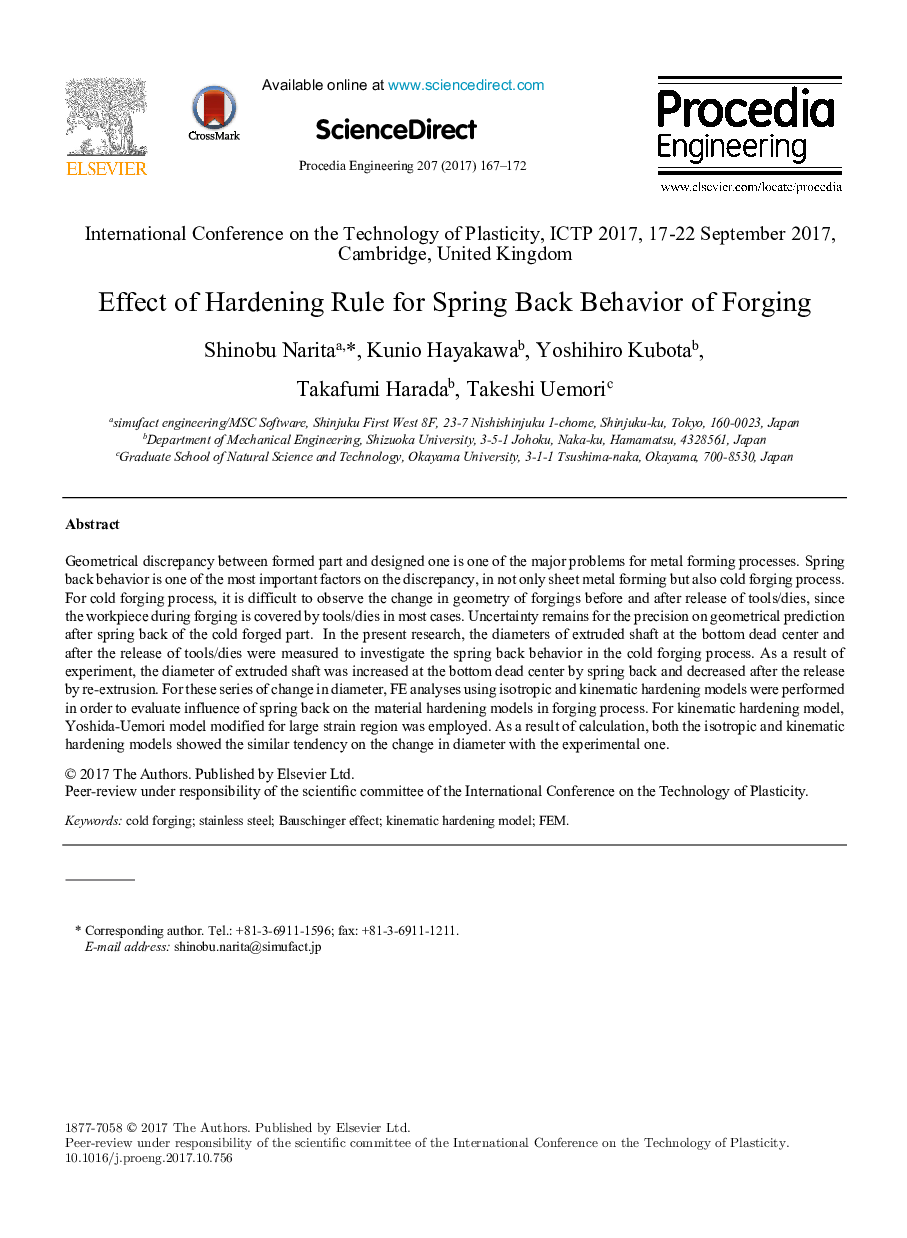| Article ID | Journal | Published Year | Pages | File Type |
|---|---|---|---|---|
| 7227081 | Procedia Engineering | 2017 | 6 Pages |
Abstract
Geometrical discrepancy between formed part and designed one is one of the major problems for metal forming processes. Spring back behavior is one of the most important factors on the discrepancy, in not only sheet metal forming but also cold forging process. For cold forging process, it is difficult to observe the change in geometry of forgings before and after release of tools/dies, since the workpiece during forging is covered by tools/dies in most cases. Uncertainty remains for the precision on geometrical prediction after spring back of the cold forged part. In the present research, the diameters of extruded shaft at the bottom dead center and after the release of tools/dies were measured to investigate the spring back behavior in the cold forging process. As a result of experiment, the diameter of extruded shaft was increased at the bottom dead center by spring back and decreased after the release by re-extrusion. For these series of change in diameter, FE analyses using isotropic and kinematic hardening models were performed in order to evaluate influence of spring back on the material hardening models in forging process. For kinematic hardening model, Yoshida-Uemori model modified for large strain region was employed. As a result of calculation, both the isotropic and kinematic hardening models showed the similar tendency on the change in diameter with the experimental one.
Related Topics
Physical Sciences and Engineering
Engineering
Engineering (General)
Authors
Shinobu Narita, Kunio Hayakawa, Yoshihiro Kubota, Takafumi Harada, Takeshi Uemori,
